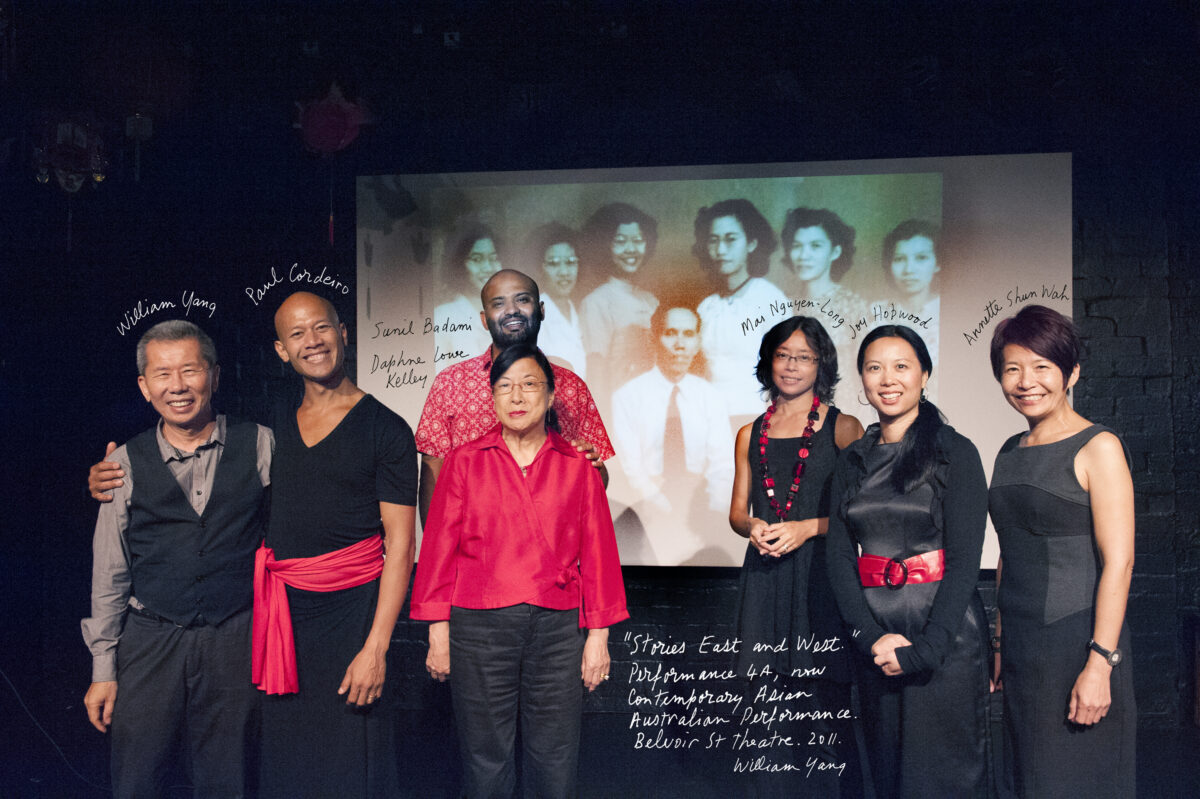
Interview by Teik-Kim Pok
“I remember you,” William says when I arrive at his doorstep. “You’re a rambling talker, a raconteur, which doesn’t particularly suit my style, which is pithier and to the point, and we’ve got to get through the story more quickly. My style doesn’t always suit everybody, so I have to pressure people like you to keep it short and punchy.”¹
Candid and firm words from the man I consider a mentor. Eleven years ago, I brought a USB of family photographs my parents had scanned and sent from Singapore, ready for William Yang to dissect. William and I were preparing for a 90-minute anthology of monologues called Stories East and West, first staged at the Belvoir Theatre to a sold-out Monday night audience. His desired degree of dramaturgical discipline wasn’t the only thing William struggled to get out of me: I remember my stories lacking enough pathos, coming across as “easygoing, comical”.
Since 2011, William has been instrumental in helping grow the local community of loud and proud Asian-Australian creatives through CAAP (Contemporary Asian Australian Performance). In partnership with Annette Shun Wah, he has directed or supported numerous works for CAAP: Stories East and West, Stories Then and Now, Life-Giving Stories 1 and 2, Who Speaks For Me? He also recently served as dramaturg on hip-hop musicians Joel Ma and James Mangohig’s In Between Two.
I didn’t share with William the full benefits I enjoyed from working with him until today. Highlights include when I was cast as one of few Asian-Australian male leads in a local feature film by a filmmaker who saw my Stories East and West performance.
For one to recognise the growth of Asian-Australian storytelling and live arts in the last decade is to acknowledge the outsized touchstone that is William’s monologic practice running through it all. Who would have thought masterclass after masterclass has also been key to a stealthy and steady audience development strategy for Asian voices on stage? It was an excellent time to find out more, even though I had known of William’s work before this last decade of creative community advocacy.
***
I take my place in William’s living room in Arncliffe, a suburb in Sydney’s inner south. Not my first visit, but lo and behold, I clock the ornate red shrine of porcelain figures of Daoist deities to his left, to the right, his balcony immaculately populated by various hanging plants. I think to myself; I remember this POV. Did I first see it in I Am The Camera or My Generation? I dredge up memories of the many live performances of William I’ve seen over the years where he tells us of coming out as a Chinese-Australian and exploring Daoism as a way of reconnecting with his heritage.
William has just returned from a triumphant opening of his exhibition Seeing and Being Seen at QAGOMA (the newly amalgamated Queensland Art Gallery and Gallery of Modern Art), billed as a major retrospective. I was aware of the passionate feting William received on social media, tight virtual hugs of congratulations in a time when we all sorely need one. Yet, I sit across William nursing a severe case of FOMO for not having made it to Brisbane for the launch.

***
My excuse was that I was on a family excursion to Canberra, where we dropped by the National Portrait Gallery. I recognised seven photographs on display there, namely of Australian luminaries: Peter Allen, Kate Fitzpatrick, Mel Gibson, Judy Davis, Patrick White, Martin Sharp and Geoffrey Rush. On a different day, I would take umbrage at this already famous roll call taking such prominence in the Capital, a sliver of the many complex individuals and unsung community heroes that William has captured.
I remember the same photos also appeared in his show, My Generation, where William’s act of documenting the convergence of multiple artistic circles in the 1970s and 1980s cannot be understated while being immersed himself. He shares that Jim Sharman, the director of musicals Hair and Rocky Horror Show, who appeared in the same collection, was instrumental in helping his first book, Sydney Diary, get published in 1984.
These were times that fed on an energy that one could describe as ‘post-Whitlam’—an Australia ready to modernise beyond its cultural backwater reputation. In that show, William revealed friendships he had nurtured across artistic disciplines. Much later, as a young waiter working one opening night at Sydney Theatre Company’s The Wharf home base, I was starstruck not only by then-NSW Premier Bob Carr rubbing shoulders with the playwright Tom Stoppard but also with the one other Chinese person in the crowd—William Yang, weaving in and out of the group with his trusty camera.
Back then, the Australian performing arts scene being as monocultural as it was, William’s presence was reassuring. Like Yoda in the Star Wars universe, his understanding and grasp of the Creative Force, of humanistic resistance, was one to trust. He’s got the receipts.
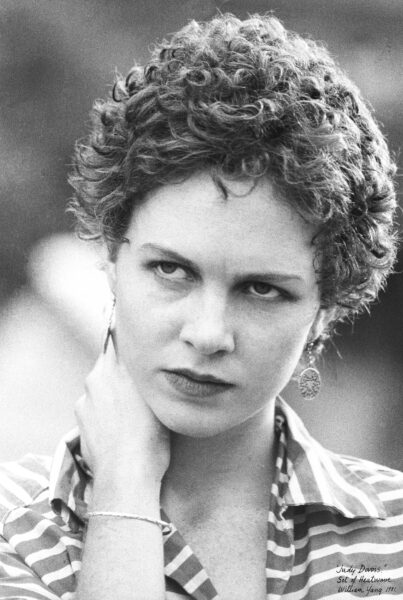
***
“That’s why I do the monologues. I have always said I’d rather tell a life than live a life. But I have to live a life in order to tell one.”
Spalding Gray, Morning, Noon and Night, 1999
An inspiration for Yang’s work, Spalding Gray, was one of many post-dramatic performance makers I learned about at university. His championing of the autobiographical monologue in abject detail took stand-up comedy to another level in the 1980s—around the same time William began putting his photographic work into slideshows and de-Anglicised spelling his surname from Young to Yang. Around this time, William had also added quite a few strings to his bow: playwright, society photographer and family historian.
The world was living through the most traumatising HIV/AIDS pandemic in living memory, which had an outsized impact on the global LGBTQI community. William heartbreakingly documented it as a frontline witness.

***
Culturally, Spalding Gray would have been worlds away from William, a third-generation Chinese- North Queenslander. William met him in 1986 when he watched Swimming To Cambodia at the Adelaide Festival. He says he found him:
“Totally engaging in a way and talking about very personal things, like talking to his shrink. [Gray] talked about going to a brothel in Southeast Asia—and people never, I’m sure that many people had been to brothels in Southeast Asia—but no one would even mention it. What happens in Bangkok stays in Bangkok is really everybody’s attitude. It was that kind of disclosure”.
It’s an unexpected revelation that a straight white male with an oeuvre one could describe as Woody Allen-esque in its sincerity and neurosis would be an inspiration to William at the time. Having created some of the boldest and defiantly sex-positive representations in live performance, William is a sought-after documentarian of the courageous struggles of Australia’s queer liberation movement in the last few decades, in particular, the years when HIV/AIDS took a tragic toll within his social circles.
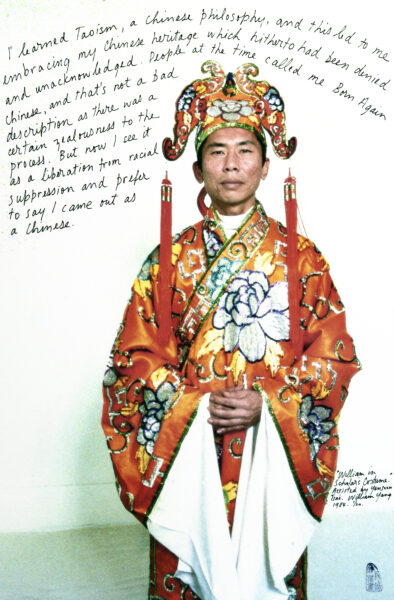
***
It speaks to the refrain William has shared with the storytellers he coaches, encouraging us to “bleed a little…just to get the audience’s attention.”
To faithfully convey how an entire community’s psyche can suffer, William also felt moved by the work of Nobel laureate Issac Bashevis Singer. The Polish-Jewish-American writer’s memoir, A Day of Pleasure: Stories of a Boy Growing up in Warsaw, was particularly touching.
Singer’s autobiography, described as a panorama of life in the Jewish-Polish ghettos, is told through individual depictions of people he had encountered in his childhood, assembled in discrete chapters, and gradually revealing more about his own identity. The influence of the book’s map-like structure, evoking internodal links between friends, acquaintances, family and noted figures, is evident in how William lays out his monologues, aided by the parameters of images he has accumulated.
I’m reminded of the first, second, and third times I watched William’s Blood Links when reflecting on these influences. Each time, I cried uncontrollably.
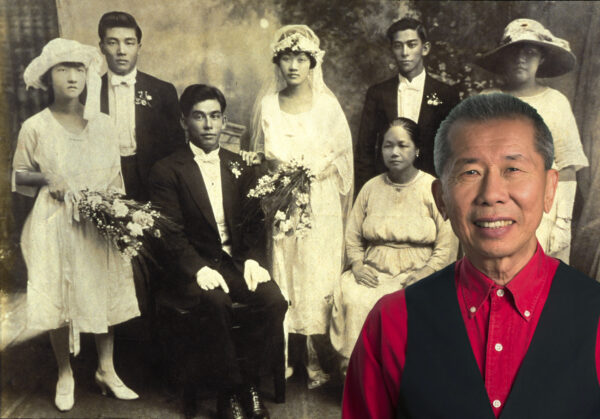
***
I arrived from Southeast Asia in 1999 in the wake of Pauline Hanson coming to prominence. Some years earlier, under Paul Keating, Australia was a country that had declared itself part of Asia, geographically and economically, if not yet culturally. Enrolled in theatre studies as an international student from Singapore who grew up in a Chinese majority, I found being ‘minoritised’ an exotic experience once landing in Sydney. Unlike William, a third-generation Chinese-Australian, I had an answer to the question ‘Where are you from’ while being deliberately obtuse to the exclusionist tones underlying this question.
I was also living on campus in Kingsford, where a hotpot of tribal loyalties was at times fluidly traversing other spectra: vacillating between urban/regional, commerce/arts, law/medicine, engineers and everyone else, let alone Asian and non-Asian. Unburdened by the expectations of my Chinese-Malaysian extended family, I was too busy negotiating these new networks to process the true impact of displacement I would later come to recognise.
It was around this time William was undertaking a fellowship at my university’s theatre department. He rehearsed a handful of staged slideshows before heading to the European festival circuit and invited theatre students to any of these showings for a whole week. So you could say I ‘binged the entire series’.
There was Sadness, which takes us on a journey to the sugar cane fields of North Queensland to find out the details of the murder of his uncle, William Fang Yuen, while pausing to remember dear friends lost to HIV/AIDS pandemic. An essay in determination and the face of mortality through rural North Queensland and a hedonistic Sydney, Sadness was a feast of new perspectives to someone who grew up in a Singapore that was both spartan mini-cosmopolis and socially conservative.

***
Shadows took me further away from the campus bubble, weaving a tale of postwar German migrants persecuted in South Australia and that of the dispossession experienced by an Aboriginal family. Both threads fed into the awareness that I was only developing an understanding of the long-standing, unresolved issues that plagued my newly-adopted country.
However, Blood Links awakened me to how connected I was through continents and across eras. Recounting a century of William’s extended family’s history, crisscrossing state lines up to Queensland and flitting between Australia and the U.S. made me ache and long for everyone dear in my past, in my present and my untold future. It was a live performance that probably had the emotional impact equivalent of staring down at Earth from space for the first time: simply awe-inspiring and being made to feel exceptional and insignificant simultaneously.
***
Now, we’re back to 2021. Due to a recent new addition to my family and COVID-19 restrictions, William and I haven’t connected in three years. However, he tells me he has been productive against the backdrop of collective isolation and ‘wasn’t distracted by going out socially, which is a big part of my life and takes up an enormous amount of my time and energy.’
His empty pandemic social calendar has allowed him to focus on assembling his retrospective and continue working on digitising and indexing his black and white negatives.
“My main legacy is a photographic legacy, in that I’ve recorded, photographically, my life really—a photographic diary, (expanded) into words and performance. So it is formalised in some way into structured work like a performance about my family, might be the LGBTI community. There’s something probably tangible in my photographic collection that is a record of some way of the people I’ve met in the places I’ve been, and there are even things I’ve forgotten. I can always go back and remember them. But I think that probably that is a legacy that I’m leaving behind, and largely it’s a legacy that I had to fund myself. No one paid me to do that, although I do make works and I do sell photographs. It’s quite hard to sell a photograph, but I’ve survived.”
I bring us back to the present, wondering if he thinks about how his work connects with emerging and present artists. I raise with William how social media technology has evolved to the point where the practice of personal disclosure is almost de rigueur online. In an age where TikTok’s calling card to its users is to be your authentic self, William responds that he has been observing and continues to be active in posting his photos on Facebook. He acknowledges he was a blogger “before the word was invented”.
“I encourage people (and myself) to tell personal stories, stories about themselves without tipping into overwhelming narcissism.”
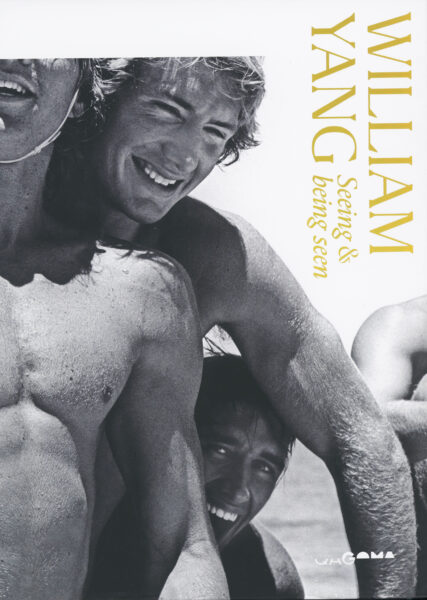
***
Before leaving his Arncliffe home, I get William to share, in his understated manner, parting words of advice for a young photographer.
To keep taking photos.
To discover one’s style along the way.
To have faith in one’s own story.
¹Interview with William Yang and Teik Kim Pok, 17 April 2021.
First published in Australian Photography on 14 October 2021. Article commissioned by Diversity Arts Australia for the Pacesetters Creative Archives project, which was funded through Create NSW.
